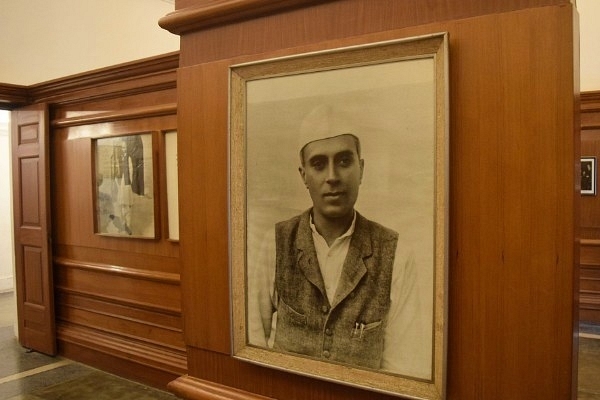Politics
Teen Murti Bhavan Museum: What Nehruvians Can Learn From Lee Kuan Yew
- To begin with, the official residence of a former prime minister belongs to the government of the day, and not to the late prime minister’s family or party.

Teen Murti Bhavan. (Mangesh Kalelkar/Flickr)
A political storm has broken out over the decision by Nehru Memorial Museum and Library (NMML) Society to build a museum commemorating the legacies of all Indian prime ministers expected to come up within the Teen Murti Estate in New Delhi. The Congress party has opposed this move alleging that the present ruling dispensation was trying to dilute the legacy of India’s first prime minister Jawaharlal Nehru, whose official residence the estate served as. It is here that the Congress and supporters of Nehru can learn a lesson in public propriety from Lee Kuan Yew and the political discourse in Singapore.
But before that, it would be pertinent to note how the Teen Murti Bhavan came to be inextricably associated with Nehru.
The Teen Murti House was originally designed by distinguished British soldier and architect Robert Tor Russell, who was also associated with the design for Delhi’s landmark Connaught Place and Pataudi Palace. Originally called the Flagstaff House, the property served as the residence of the Commander-in-Chief of the British Army. The present name of Teen Murti Bhavan was derived from the three statues, which stand near the estate. These were designed by British sculptor Leonard Jennings and commemorated the sacrifices of the soldiers from the states of Mysore, Jodhpur and Hyderabad who served with distinction during the First World War across battlefields in Syria, Palestine and Sinai.
After Independence, the Teen Murti House was designated as the official residence of the prime minister of India in 1948. As Sanjaya Baru mentions in this piece, "Nehru decided to lay claim to the official residence of the Commander-in-Chief of the Indian Armed Forces... only after Mahatma Gandhi’s death and a year into his tenure. Till then, he lived in a regular Lutyens’ bungalow on what is now Motilal Nehru Marg, like all his cabinet colleagues including Sardar Patel.” Nehru continued to reside in the same until his death in May 1964. Subsequently, the NMML was set up as an autonomous institution under the Ministry of Culture, government of India, and was housed within the Teen Murti Bhavan. The prime minister of India heads the NMML with the Home Minister as the vice-president and the entire property vests with the government of India.
Now, the lesson from Singapore.
38, Oxley Road which is a colonial era bungalow, served as the long-time residence of Singapore’s first Prime Minister Lee Kuan Yew. Upon his passing away in 2015, a controversy erupted over a clause in his will which called for the house to be demolished after his death. The reason is said to be the former prime minister’s belief that there was a great risk of the residence falling into disrepair and also that costs incurred in preservation could be avoided. Contrast this with the way the Congress party and its ecosystem lay their claim to the Teen Murti Bhavan.
Be that as it may, in Singapore, the present prime minister, who is the son of Lee Kuan Yew also stated that his father had witnessed residences of famous personalities “become shabby” and “kept frozen in time …. as a monument with people tramping in and out”.
The controversy over the status of the residence erupted after the current Prime Minister’s siblings accused him of not honouring their father’s will and trying to gain politically from the house’s preservation. A government panel, in a report submitted in April, has laid out three possible alternatives wherein either the property is retained as a national monument or merely the basement dining room preserved, or the entire house demolished as per the clause contained in the former prime minister’s will.
The Lee Kuan Yew story has been highlighted to draw attention to the manner in which Singapore and its first family, so to speak, dealt with the question of what to do with the residence of their first prime minister after his demise. The contrast it presents to the manner in which Nehru’s descendants and their party staked claim to the Teen Murti Bhavan, is too stark to miss.
While there is no denying the contributions of former prime minister Nehru, there is nothing wrong with a republic recording and celebrating the contributions of all its prime ministers in a museum. The Teen Murti Estate and house belong to the Union government and if it wishes to use it for documenting the legacies of all prime ministers, then so be it.
Support Swarajya's 50 Ground Reports Project & Sponsor A Story
Every general election Swarajya does a 50 ground reports project.
Aimed only at serious readers and those who appreciate the nuances of political undercurrents, the project provides a sense of India's electoral landscape. As you know, these reports are produced after considerable investment of travel, time and effort on the ground.
This time too we've kicked off the project in style and have covered over 30 constituencies already. If you're someone who appreciates such work and have enjoyed our coverage please consider sponsoring a ground report for just Rs 2999 to Rs 19,999 - it goes a long way in helping us produce more quality reportage.
You can also back this project by becoming a subscriber for as little as Rs 999 - so do click on this links and choose a plan that suits you and back us.
Click below to contribute.
Latest